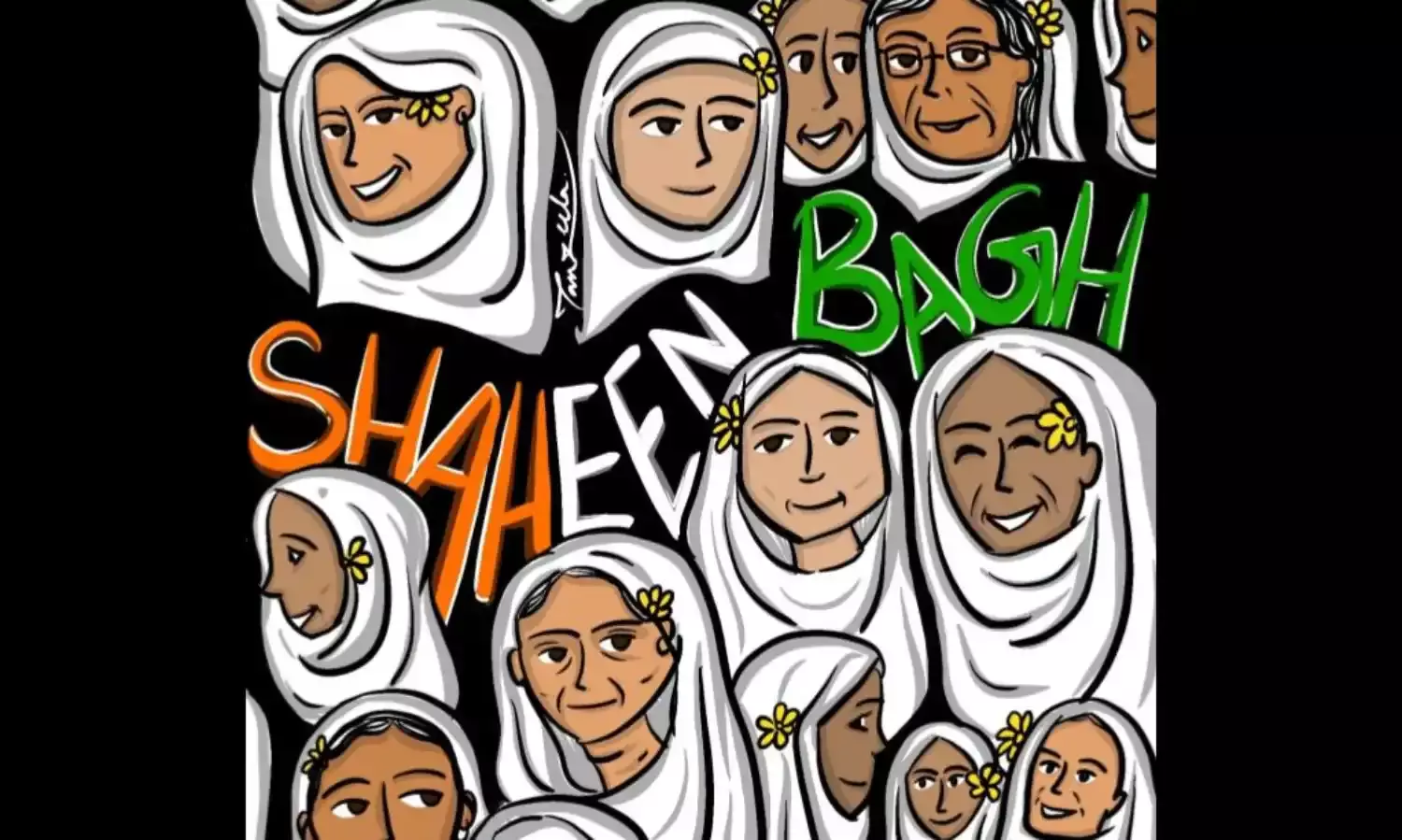Har Ghar Shaheen Bagh - Is the future of Protests Digital
Online, for Now

Hailing from Sonepat, 34 year old Saima Khan was one of the many women who spent each cold winter night last November, December, January and February at Shaheen Bagh in New Delhi, to protest the contentious Citizenship Amendment Act and National Register of Citizens, policies both nationally and internationally deemed an aggressive attack on the secular fabric of the Constitution of India.
Once the lockdown was announced, Shaheen Bagh was evacuated and Saima along with hundreds of other protestors were forced by circumstance to move into their homes. The voices however continued, unsilenced, as they moved their protest online.
“The government took advantage of the situation almost immediately. They whitewashed the graffiti, tore down all our artwork. We watched it happen, there wasn’t much we could do. But Shaheen Bagh is not a place, it is an emotion, and it will return. As long as the virus holds us captive we will use the digital medium to protest and also carry out relief work. In fact when the online protest went live, we had around 300 women who would raise slogans every day; we would decide specific agendas and keep the movement alive from our balconies. That’s why we call it the Har Ghar Shaheen Bagh movement.”
Over the past 5 months, Kanchan Yadav, a recent graduate from Ashoka University is one of many student activists participating in Har Ghar Shaheen Bagh. Every night at 10:30 she steps out to her balcony, equipped with posters, song lyrics and the goal of azadi: to fight the imposition of CAA and NRC in what she says is “an attack on the fundamental values enshrined in our Constitution”.
Despite skepticism that virtual protests are but twitter storms, with no tangible end, her ritual continues undeterred.
“The digital medium is easily and widely accessible. It helps build solidarity across nationalities and cultures. It also means the government is using its resources to actively censor. Therefore it becomes a significant avenue for showcasing dissent,” says Yadav.
“Look at pages like Fuck BJP or feministflowercrown, which keep getting taken down. With the number of political prisoners increasing, along with corona there is an increasing sense of fear of being detained. It feels safer to continue this protest online.”
Kanchan Yadav’s fear of surveillance and imprisonment prevents her from taking to the streets. Those part of the Pinjra Tod movement have seen their fellow protestors Devangana Kalita and Natasha Narwal charged by the Delhi Police with attempt to murder, rioting and criminal conspiracy. Police also charged Narwal under the Unlawful Activities (Prevention) Act for participating in protests against the Citizenship Amendment Act.
Pinjra Tod have organised several protests during the lockdown using facebook and whatsapp: cultural programs, signature campaigns, and twitter storms demanding “the immediate and unconditional release of all political prisoners implicated in fabricated cases”, that Parliament repeal UAPA, and that police arrest those they deem “the real culprits of the Delhi pogrom”, who include former MLA Kapil Mishra and Parvesh Varma MP.
Said a source, “The government has definitely spent a lot more time falsely accusing people and bulldozing heavily critiqued policy during the lockdown. But we have not remained silent, and have used the digital medium to protest effectively. It has opened up a wider network of engagement and solidarity.”
Scholars, teachers and feminists from around the world have protested the arrests of Devangana Kathil and Natasha Narwal.
Online protests are active but online is also a site of active propaganda. With or without the virus, the IT Cell armies conduct a large chunk of campaigning online through whatsapp, facebook, tiktok, and even less discussed apps like sharechat.
”The BJP arguably has the most organised IT cell, but every party has realised that there are multiple mini-elections which are fought on social media before D-Day, and it is important to fight and win these battles being fought on social media everyday,” said a senior member of a political consultancy firm.
Pointing out that protests and propaganda are often interlinked, she believes “It is important to remember that the Shaheen Bagh protest became an important symbol of Muslim solidarity, in fact people irregardless of race, caste, religion, location came together under this sentiment and protests erupted across the nation.”
“However, it also became a tool for polarising propaganda. If the digital space through fake news and paid news is being used so actively to spread propaganda and misinformation, it becomes absolutely crucial that civil society groups use it too to express dissent. Which is why I will never dismiss a twitter-storm as meaningless, though it may sometimes appear so,” she tells The Citizen.
Is the future of protests then digital? Not at all. For local concerns, sooner or later, community adrenaline ensures that people will take to the streets. If there are community bonds.
Said Kavita Krishnan, secretary of the All India Progressive Women’s Association, “During the lockdown the majority of conversation around migrant labourers took place online, and the causes taken up on social media are very genuine. But the digital medium is only one avenue and it definitely cannot be the future.
“We saw people taking to the streets in the US during the George Flyod incident, during the unlock period we saw how women in Punjab led agitations against micro-finance companies.
“As long as people are following distancing measures, wearing masks, protests must continue. Otherwise if you leave it to the government, it will gag all forms of protest.”
Cover Photo Credit: Tanzeela



